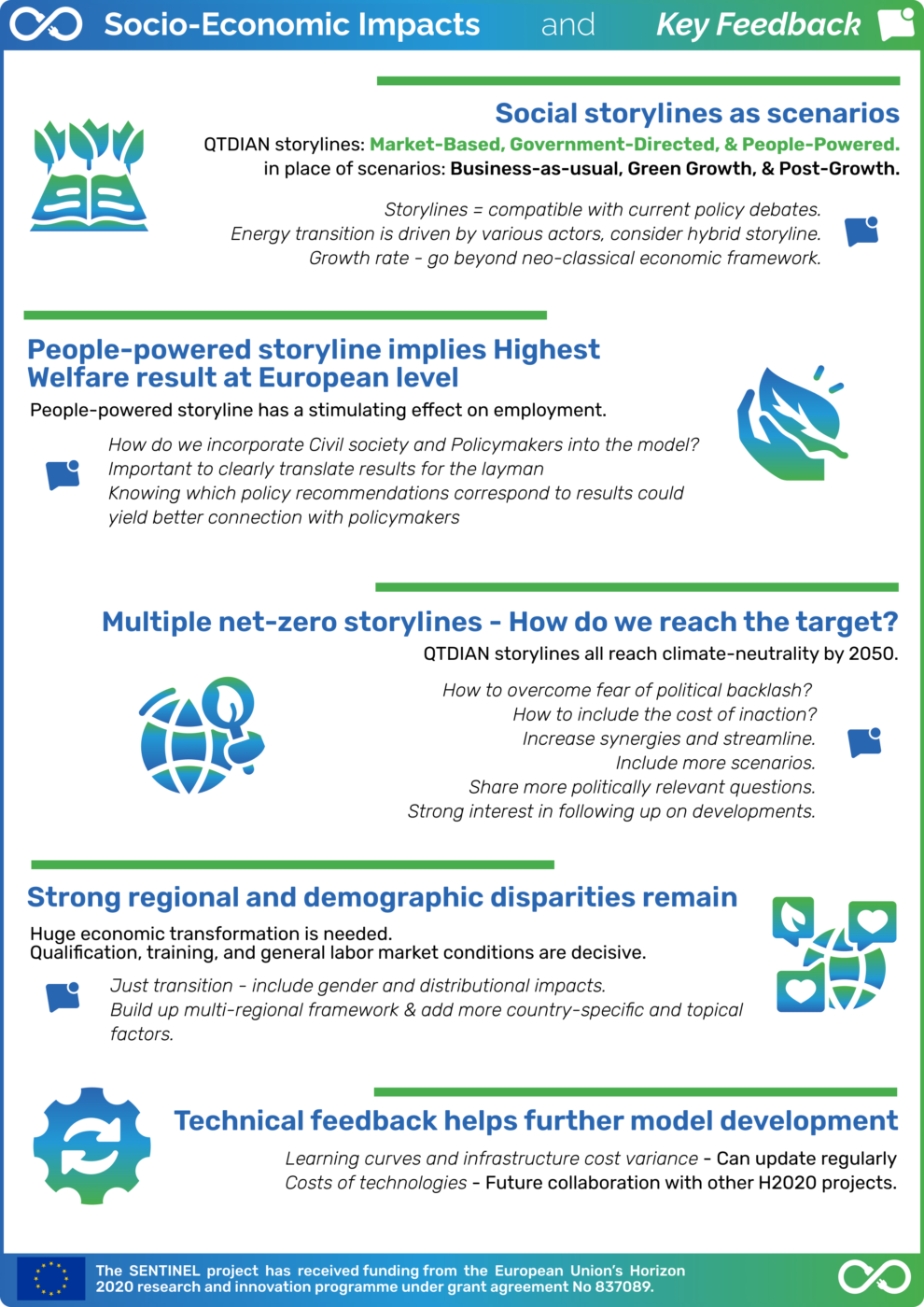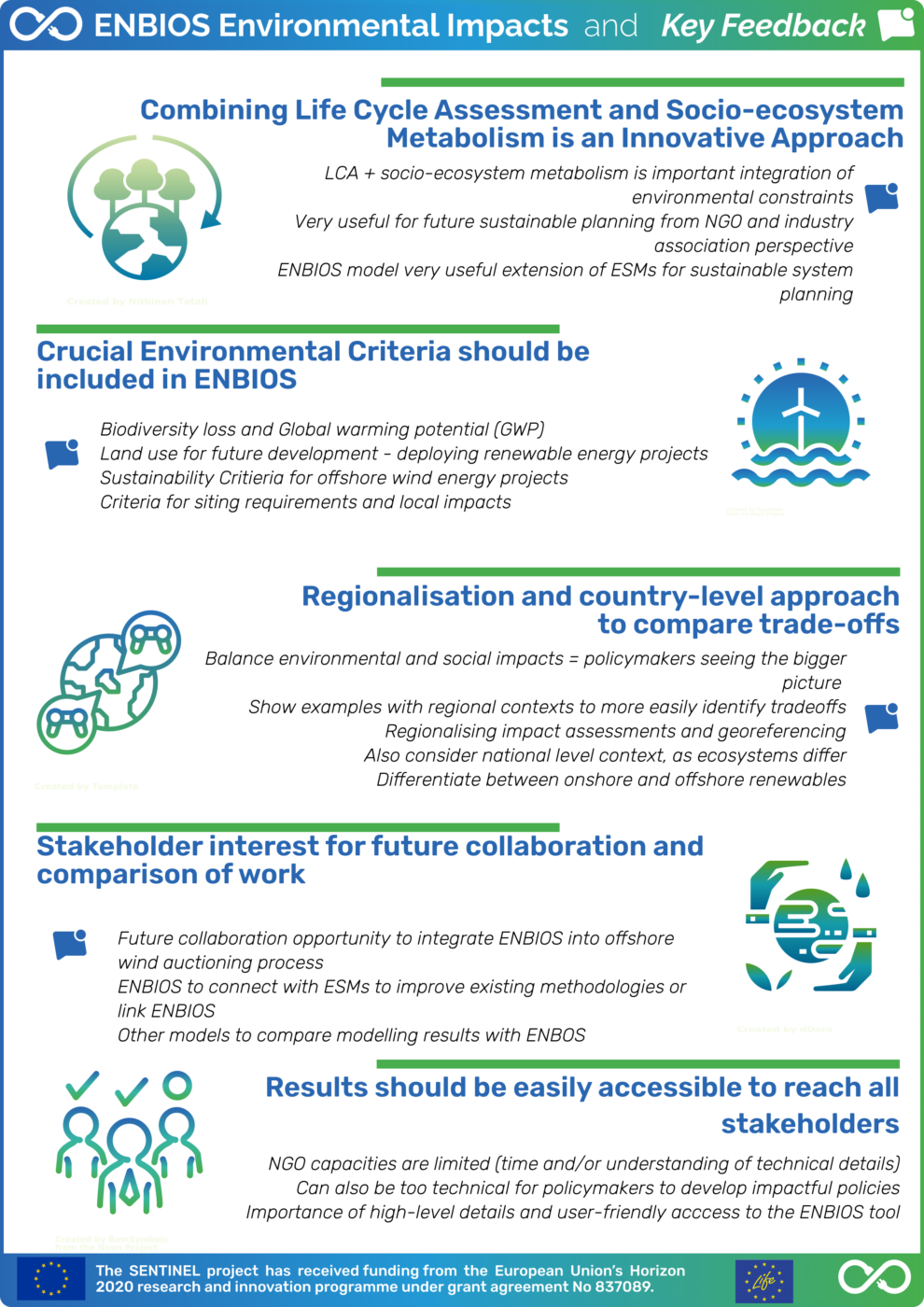A variety of stakeholders have provided numerous contributions throughout the SENTINEL project: from identifying needs for energy models, defining research questions models should answer, to co-developing of storylines and potential energy scenarios. Stakeholders remained fundamental to the validation of the project’s outcomes, as we invited them to participate in so-called “deep dives”. During the thematic deep dives, targeted stakeholders provided feedback on SENTINEL models’ results regarding the feasibility and usefulness of the results, on potential further models’ developments and they identified further research questions. The SENTINEL energy modellers not only received greater insights validating their models and prioritising future model improvements within the SENTINEL project, but they were also invited to collaborate with other European energy modelling projects.
See how stakeholder feedback gathered from the deep dive dedicated to modelling socio-economic impacts of energy transition from the WEGDYN and QTDIAN models, environmental impacts of energy technologies from the ENBIOS tool, and the decarbonization pathways for the EU building sector from HEB and DREEM.
Models used
WEGDYN
Computable general equilibrium model
DetailsQTDIAN
Euro-Calliope
ENBIOS
Multi-Scale Integrated Sustainability Assessment module
DetailsHEB
Building energy demand and CO2 emissions model
DetailsDREEM
Dynamic, object-oriented, and equation-based high-resolution simulation model
DetailsSENTINEL case study
Case study: Continental – Europe
Europe-wide opportunities and trade-offs with particular reflection on the concerns, needs and demands of stakeholders.
Details
